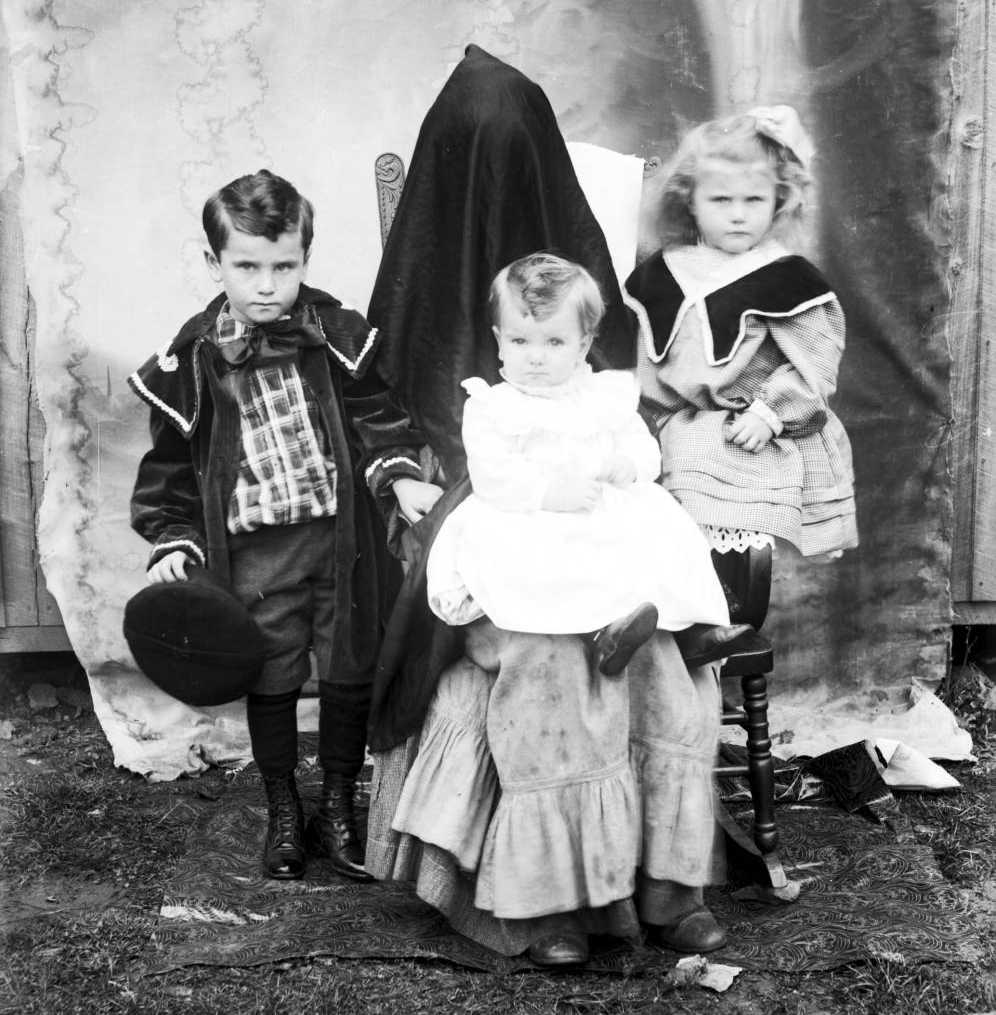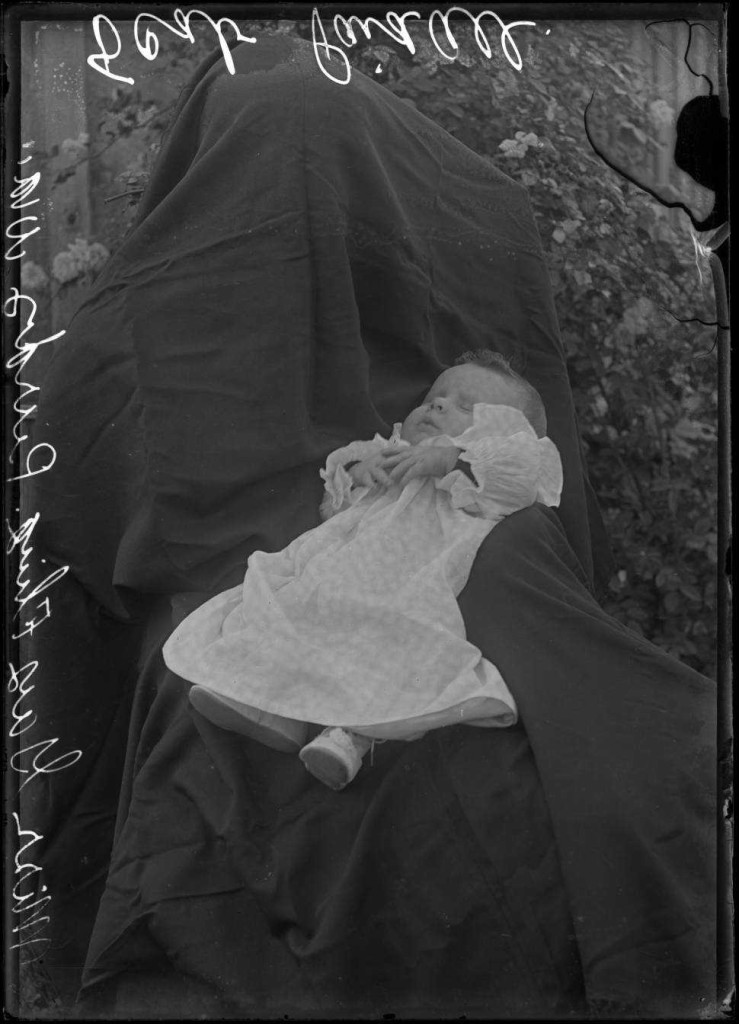Hidden Mothers, Revealed!


We all know that the history of photography has included some fascinating developments and ingenious solutions to common problems. Ohio Memory, among its wealth of historical photographs, has several examples of an interesting phenomenon that appeared in 19th and early 20th century portrait photography: a technique known as the “hidden mother.”
Found in the Albert J. Ewing Collection, these images show portraits of children held by a figure cloaked underneath a blanket or backdrop cloth–apparently when a sibling would not suffice. The idea behind this practice was that a mother would hold her young child to keep him or her calm–and more importantly, still–during the extended exposure time needed for photography of the era, while remaining “out of sight” of the camera.
The ultimate goal may often have been to either crop the mother’s figure out of the final printed photograph, or to have her positioned in such a way that she would be blocked out by the mat or frame in which the photograph was later housed. However, we can see in several of the examples from Ohio Memory (including the one seen above) that this was apparently not always the goal.

An increased interest in finding examples of this practice has resulted in numerous online articles and photosets related to the “hidden mother,” while the comments sections of these features have delved into the relationship between the “hidden mother” phenomenon and the Victorian practice of postmortem photography. Some researchers also speculate that the “mother” was actually a different individual in many cases–perhaps a photographer’s assistant or the child’s nanny–adding to the desire to keep them “hidden.” Historic photographs are sometimes identified as “hidden mothers” when the mother or other figure is just out of frame, supporting the child or providing the backdrop. Don’t worry–we have examples of those, too!
We consider ourselves lucky to have some strong examples of this unique historical convention, and as we continue our ongoing work adding to the Albert J. Ewing Collection, we will keep an eye out for further instances of the “hidden mother”! Think you’ve found an unidentified hidden mother in our Ohio Memory collections? Use the comments and tagging feature to add this information yourself!
Thanks to Lily Birkhimer, Digital Projects Coordinator at the Ohio History Connection, for this week’s post!



Leave a Reply
You must be logged in to post a comment.